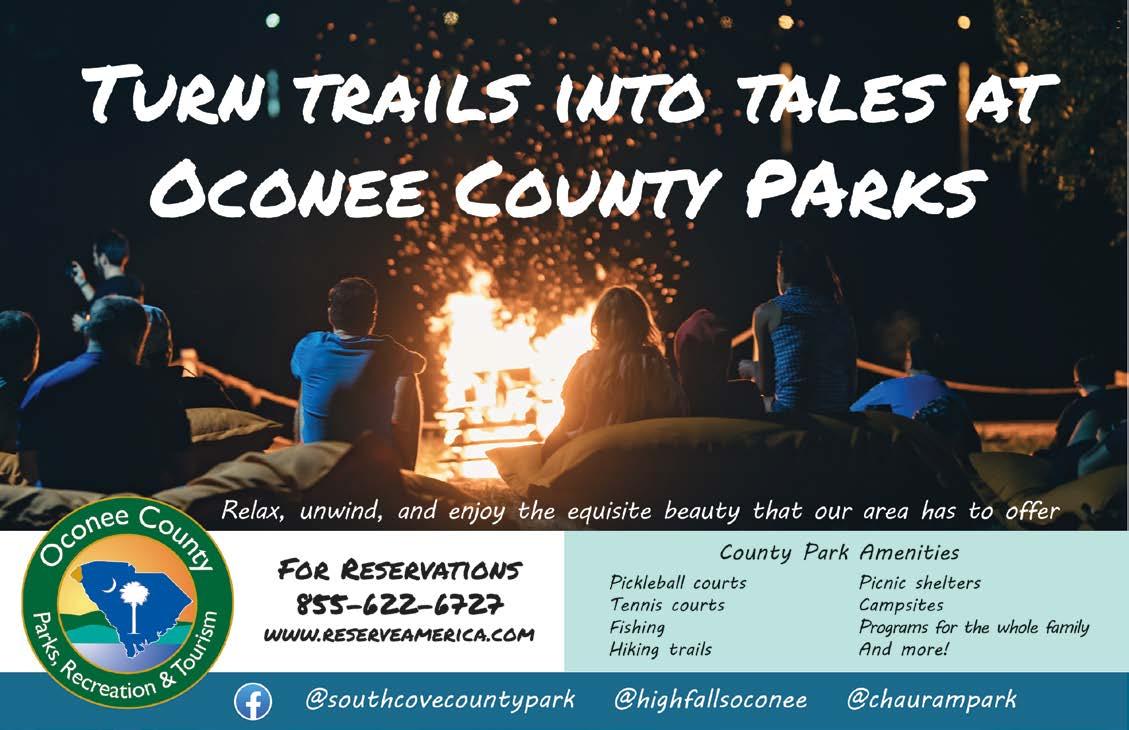
FRIENDS OF LAKE KEOWEE SOCIETY




Dave

By Dale Wilde, President, FOLKS
As we pass the midpoint of 2025, I took the opportunity to reflect back on our accomplishments this year so far.
As a stakeholder in this watershed, perhaps the most important accomplishment was when FOLKS signed the Bad Creek Reauthorization agreement. FOLKS Board members spent the past two years working through the reauthorization process of the Bad Creek Pump Station and the proposed Bad Creek II Power Complex. Now that stakeholder meetings have concluded, Duke Energy is proceeding with the process of requesting relicensing with the Federal Energy Regulatory Commission (FERC).
The Bad Creek II Power Complex, which would utilize the same reservoir for water storage as the current Bad Creek Pump Station, has the potential to double the energy and storage capability of the existing Bad Creek Project. Bad Creek Pump Station currently produces up to 1,400 megawatts (MW) of power. This is a very important energy production project for the Upstate, and relicensing would ensure another 50 years of clean-green energy.
As part of the reauthorization agreement, stakeholders negotiated and agreed to substantial and unprecedented commitments from Duke Energy. These include:
• The offer of new leases to SCDNR for the following properties:
Beaty Tract – Parcel ID 037-00-01-004 (app. 557 acres)
Smeltzer Tract North (app. 189.7 acres)
Smeltzer Tract South (app. 120.5 acres)
~ Jocassee Tract (app. 1,019 acres)
• Construction of a courtesy dock at both the Devils Fork State Park Villa Ramp and the boat-in campground ramp
• Development of a Foothills Trail Interpretive Exhibit at the Bad Creek Visitors Center located in the planned new Hydro West Regional Support Building near Bad Creek
• Continued maintenance or arrangement for the maintenance of the approximately 43-mile-long Duke Energy section of the Foothills Trail throughout the 50-year term of the new license, including Duke Energy’s plans to install ten (10) primitive privies/ outhouses in campgrounds along the portion of the Foothills Trail that is managed by Duke Energy
• One-time payments of the following:
$500,000 to the Oconee County Conservation Bank to support future land conservation efforts
–
$10,500,000 to SCDNR within one year following new license issuance –
$1,000,000 for use in implementation of SCDNR’s Fisheries Enhancement and Management Program Funds –
$500,000 to support the existing KeoweeToxaway (KT) Habitat Enhancement Program
–
$500,000 to the Lake Keowee Source Water Protection Program for initiatives to protect and enhance water quality in the KT Project watershed
–
$2,500,000 to support the development of a Wildlife Enhancement Program under the purview of SCDNR
These financial commitments will make significant and meaningful enhancements possible to large areas of the watershed throughout the term of the approved Bad Creek License. The agreement also cements our commitment to align with other stakeholders in the Upstate to work together with a common goal of preserving the watershed for future generations.
Further, the FOLKS Board continues to make great strides in its dedication to the stated mission through our Speaker Series events led by Tony Gody. These events increase our footprint in the community and help get the message out that FOLKS remains not only relevant, but the only nonprofit on Lake Keowee that focuses on its preservation, conservation, and education.
The Board is pleased to announce that we have offered Melissa Higgs, our current Communications Manager, an expanded role. She has done an exceptional job with the KEOWEE magazine. Melissa recently retired after 30 years with the State, including 18 years as a middle school teacher. She has agreed to substantially increase her part-time hours as an employee of FOLKS. She will begin to focus more on community and business/corporate outreach and to provide additional support for our Speaker Series and event planning. Join us in congratulating Melissa on her retirement and her increased participation with FOLKS!
Lastly, we wish to thank Hannah Gutenstein for all she did for FOLKS. She recently accepted a full-time position in California. For the past year, Hannah did a fabulous job assisting Melissa with communication efforts and social media. Hannah was also responsible for event planning and did an excellent job with our recent Annual Event. We will miss Hannah and wish her the best.


P r o s p e c t i v e b u y e r s o f t e n a s k o u r
t e a m “ w h a t ’ s t h e a r e a ’ s g r e a t e s t
a t t r a c t i o n — t h e c o m m u n i t i e s , t h e
g o l f c o u r s e s , t h e c l u b s ? ” “ L a k e K e o w e e ” i s o u r r e s p o n s e .

BY SUE DRAGOO, Public Relations Officer, America’s Boating Club — Golden Corner Lakes
Each year, National Safe Boating Week kicks off with a Safe Boating Campaign in May. It serves as an important boating safety reminder before the Memorial Day Weekend.
For over 100 million Americans, boating continues to be a popular recreational activity. In increasing numbers, people are taking to the water and enjoying boating, sailing, paddling and fishing. The U.S. Coast Guard, the National Safe Boating Council, and federal, state and local boating partners encourage all boaters to explore and enjoy our beautiful waters responsibly.
Basic boating safety procedures — carrying lifesaving emergency distress and communications equipment, wearing life jackets, attending safe boating courses, participating in free safe boat safety checks and staying sober when navigating — can help ensure boaters stay safe throughout the season.
Safe boating begins with proper and thorough preparation. According to the Coast Guard:
• human error accounts for most boating accidents;
• drowning was the reported cause of death in three out of every four recreational boating fatalities 2023; and
• approximately 87 % of those who drowned were not wearing life jackets.
National Safe Boating Week highlights important life-saving tips for recreational boaters so they can have a safer, more fun

experience out on the water throughout the year. Here are some tips that may just save your life:
• Wear a U.S. Coast Guard approved life jacket that fits. No matter what activity you have planned on the water, always remember to wear a life jacket every time you are on the water. Be sure it’s a proper fitting life jacket. Accidents on the water can happen much too fast to reach and put on a stowed life jacket.
• Know state boating laws. Rules and laws can differ by state, and violations can cause different
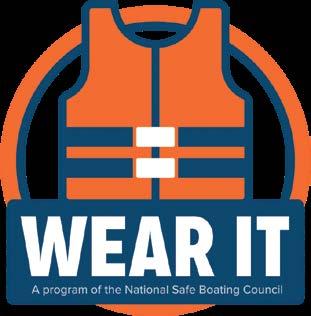

situational problems. You can obtain a copy of The Handbook of South Carolina Boating Laws and Responsibilities from the South Carolina Department of Natural Resources by accessing their website at dnr.sc.gov or calling them at 1-800-277-4301.
• Take a boating safety course. Learn valuable tips that can help save your life in unexpected situations. For information on safe boating classes, access ABClubGCL’s Facebook page or the local Americas Boating Club website at abclubgcl.org.


• Make sure your boat is prepared. There are many items that need to be checked and rechecked on any boat. Schedule a Vessel Safety Check before you hit the water. America’s Boating Club® — Golden Corner Lakes conducts these checks free of charge.
• Check the weather, including the water temperature, before you leave and be aware of changing conditions.
• Be Aware. Nearly a quarter of all reported boating incidents in recent years were caused by operator inattention or improper lookout.
• Know where you are going and
travel at safe speeds. Be familiar with the area, local boating aids to navigation (buoys) and no wake zones.
• Don’t drink while you boat. Alcohol is a leading factor in boating-related deaths.
• Use an engine cut-off switch — it’s the law. An engine cut-off switch is a proven safety device to stop a powerboat engine should the operator unexpectedly fall overboard.
• Be aware of carbon monoxide poisoning. Gasoline-powered engines on boats, including onboard generators, produce carbon monoxide (CO), a colorless and odorless gas that can poison or kill someone who breathes too much of it. Be sure to install and maintain a working CO detector; never block exhaust outlets; and always dock, beach or anchor at least 20 feet away from the nearest boat that is running a generator or engine.
• Have at least two communication devices that work when wet, such as satellite phones, emergency position indicating radio beacons (EPIRB), VHF radios and personal locator beacons (PLB).
• Leave a “float plan” with a trusted person before you leave the dock that includes details about the trip, boat, persons involved, towing or trailer vehicle, communication equipment and emergency contacts.
Ron Osburn, a former America’s Boating Club commander, instructs a section of the Golden Corner Lakes America’s Boating Course. Although not
required by law, Ron suggests having the following on your boat:
• Anchor(s) – a Danforth anchor is suitable for Lake Keowee, especially to avoid drifting when your boat is disabled
• Extendable pole boat hook
• Waterproof map of the lake and/ or an electronic navigation app on your iPhone or GPS device
• Float plan given to a trusted friend or neighbor with the details of your trip
• Paddle (some boat paddles have a boat hook at the end)
• Waterproof case for your cell phone and/or a “drybag” for identification documents
• Plenty of line for docking/ anchoring
• Boat “fenders” (bumpers)
• First aid kit with up-to-date/ unexpired contents in a waterproof container and sunscreen
• Emergency signaling devices (portable lights and flags)
• Life jacket for your pet (if you have a cat and put a life jacket on it — Ron wants you to call him so he can see you do this!)
• Tow rope(s)
• A good sounding device (such as an air horn or storm whistle since most boat horns are pathetically weak)
For additional information about America’s Boating Club® – Golden Corner Lakes membership, boating safety classes and activities, visit their website at abclubgcl.org or Facebook at ABClubGCL. America’s Boating Club® is a registered trademark of the United States Power Squadrons.



BY JACKSON HIGGS, Former Jack Lewis Watershed Stewardship Scholarship Recipient, Oconee County 4-H Ambassador
Summertime is a great time to experience Lake Keowee. Warm South Carolina weather and long daylight hours encourage kayaking, boating, fishing, swimming, and various other aquatic activities. Because of this, there is no better time to appreciate our lakes than the month of July, which has been designated by the North American Lakes Management Society (NALMS) as Lakes Appreciation Month.
FOLKS is a member of NALMS, an organization that creates partnerships between scientists, professionals, and citizens to promote the preservation of lakes and reservoirs. NALMS “welcomes anyone interested in lakes.” The organization accomplishes their goal of education and dialogue through publications, such as the quarterly LakeLine magazine, an annual conference, and the inclusion of lake management resources on the NALMS website (nalms.org). Every year, NALMS also promotes lake conservation through Lakes Appreciation Month in July, which brings awareness to the value of our lakes via educational activities and scientific research, such as the Secchi Dip-In, which allows citizens to collect and record information about their local lake’s health.
Spreading awareness about the importance of lake conservation is vitally important to the well-being of ecosystems. Freshwater lakes contain high levels of biodiversity. According to a study by University of Arizona ecologist John J. Wiens in the journal, Ecology Letters, there is a higher number of animal species per unit area in freshwater than terrestrial or marine biomes, despite freshwater only making up 2% of Earth’s surface area. Biodiverse ecosystems, such as the ones that inhabit lakes, are more resilient to environmental changes, according to a study in the peer-reviewed Ecology Letters journal (Hong, Schmid, et al.). Protecting lakes encourages freshwater biodiversity, which ensures that many of the species that impact human well-being will resist the environmental stressors caused by increased development and climate change.
Human health and species richness are intertwined. Plants and animals that inhabit lakes and ponds can reduce freshwater pollution. For example, a study by researchers from the University of New Hampshire showed that duckweed, a floating aquatic plant, transforms the organic contaminant benzotriazole into a non-toxic chemical, leading to less pollutants in the water

(A. O’Brien, Z. Yu, et al.). In addition to plants, animal species have an impact on human health. Increased fish species allow freshwater capture fisheries to continue running. These fisheries, in turn, lead to food security and jobs. Inland fisheries provide all the animal protein for 158 million people worldwide (McIntrye, Liermann, and Revenga).
Lake conservation also promotes economic growth. According to the South Carolina Department of Parks, Recreation, and Tourism’s estimates of 2018, 2019, and 2021 tourism totals, 8% of visitors to South Carolina (an estimated 2.4 million people annually) indicated they engaged in activities related to state parks, monuments, recreation areas, wildlife viewing, fishing, hiking, backpacking, or canyoneering. Two state parks in our area, Devil’s Fork State Park and Keowee-Toxaway State Park, and several county parks feature access points to lakes in the Lake Keowee watershed. Conserving Lake Keowee ensures that tourists will continue to visit our local parks, generating tourism dollars for the South Carolina economy.
In addition, Lake Keowee is used by Duke Energy to cool its power plant’s three nuclear reactors. Along with generating electrical power for millions of residents, Duke Energy also provides jobs for local communities, supports non-profit initiatives, and provides the local and state governments with tax dollars. The Oconee Nuclear Station employed more than 800 workers in 2022 and paid over $19 million in Oconee County property taxes and more than $30 million in South Carolina payroll taxes (Duke Energy Nuclear Information Center). The influx of tax dollars enables the government to fund important projects, such as infrastructure improvements and business development. Additionally, Duke employees are able to support the local economy.
There are a variety of ways that individuals and communities can support Lakes Appreciation Month in July and conservation
(continued on page 11)
BY DALE WILDE, President, FOLKS
Since 1993, Friends of Lake Keowee Society has partnered with other local conservation groups to preserve the Lake Keowee Watershed. The magazine has included articles about these local groups, as well as the efforts of individuals who have placed their property in conservation to preserve sensitive tracts of land and prevent overdevelopment. Although environmentally conscious development has built communities around the lake, each landowner should preserve and protect their portion of the watershed. Good stewardship is first and foremost; however, there are other ways to preserve sensitive areas along the shoreline and headwaters to ensure safekeeping efforts of developers. Conservation of land around the lake begins with looking at the impacts of overdevelopment and requires a combination of strategies that involve planning, regulations, and community engagement.
Both Pickens and Oconee Counties have routinely updated their comprehensive land use plans. These plans include guidelines for sustainable development, protections for the view field along the scenic routes, and growth projections. Local environmental groups focus on conservation areas. The Keowee-Toxaway Reauthorization designated specific areas for recreational use, such as public ramps, and declared the islands of Lake Keowee free for public access.
Developers are required by the state to conduct thorough environmental impact assessments before approval of projects. Those studies identify potential negative effects on the lake and the surrounding ecosystem. The studies also identify mitigation methods to prevent long-term negative impacts. Developers are encouraged during the planning process to adopt sustainable building practices, such as minimizing impervious surfaces and using native landscaping to protect shoreline buffers. This helps maintain the natural character of the area and provides protection from shoreline erosion.
Zoning regulations are also vitally important for the establishment of buffer zones that serve to protect sensitive areas and restrict high-density development, both on and off the lake. By limiting the types of development allowed near the lake, such as large hotels and industry, it ensures that density impacts will be minimized.
Oconee County has a Lake Overlay District, which creates a 750foot buffer to prevent industrial development up from the Duke

Energy Public Boundary Line (PBL). This regulation also limits the height of structures to no greater than 65 feet above finished grade, and lots are limited to a net density of no greater than two dwelling units per acre. Most importantly, the Duke Energy PBL requires a natural vegetative buffer of 25 feet along the 800 mean sea level (MSL) of shoreline properties. This buffer helps to minimize shoreline erosion. See oconeesc.com/documents/ planning-zoning/lake-overlay-district.pdf for more information.
Pickens County has a unified development standards ordinance that defines the General Development District through a series of articles, subsections and appendices. Pickens County does not have a lake overlay district per se, though in their Appendices A and D there are defined overlay districts. Appendix A defines the Highway 18 Overlay District, which is an 18-mile corridor in the unincorporated area of Pickens County. Appendix D defines the Highway 11 Overlay District that follows part of the historic Cherokee Path through the Blue Ridge Escarpment spanning 118 miles and five counties. The objective of this ordinance is to preserve natural beauty; protect mountain vistas, lakes, river watersheds, and forest preserves; increase greenspace areas; and protect pristine land.
Pickens County also passed a 50-foot zoning ordinance to create a vegetative buffer from the Duke Energy PBL.
Through community engagement, communities can effectively manage growth and protect the ecological integrity and beauty of lakes and their surroundings.
Projects of a certain scale are required to engage local communities in the planning process. Public input and feedback ensure that development reflects the needs and desires of residents, as well as detail any potential or actual negative impacts on environmentally sensitive areas. Public engagement is important for the community to express their vision for the area that may not be evident in planning documents. The recent efforts
to develop a large hotel at Parris Mountain is a good example of effective public engagement. The large hotel project was defeated when the request for annexation failed.
Landowners can collaborate with local and national conservation organizations to develop strategies for protecting the lake and surrounding areas. Conservation groups can educate the

(continued from page 9)
all year. Participants can become better informed through the nalms.org website, can spread the word on social media, and can explore lake activities that promote conservation.
To participate in the Show Your Lakes Appreciation Challenge (July 1-31):
• On Facebook, X, or Instagram, share a #lakeselfie or photos of your friends, family, colleagues, pets, etc. enjoying or working on a lake or reservoir!
• Add an informative, funny, or witty caption along with the name of the lake.
• IMPORTANT: Be sure to use the hashtag #LakesAppreciation and tag NALMS in your post so they can find your entry. Only utilizing the #lakeselfie hashtag will not guarantee entry in the contest.
Another way that people can conserve Lake Keowee is to participate in SC Adopt-A-Stream’s Stream and Lake Monitoring initiatives. You can be certified virtually to complete lake monitoring. Volunteers measure temperature, algal bloom, invasive plant levels, and transparency, and make site
public on the ecological and recreational value of these areas. Promote awareness about the importance of preserving natural habitats around the lake. Conservation Easements are a key mechanism for the preservation of tracks of land. Landowners and consultants work together to establish conservation easements that protect sensitive lands from development while allowing for certain uses, such as recreation or agriculture.
Conservation lands preserve vital wildlife habitats that protect delicate ecosystems. Conserved lands also support habitat for native species to thrive, ensure an ecological balance, and provide significant economic impact to our region. Direct benefits include the sustainable harvest of natural resources, such as timber and fish, while indirect benefits from ecotourism include recreational activities such as hiking and birdwatching. Additionally, well maintained conservation lands can save billions of dollars by mitigating natural disasters such as fires and ensuring water quality.
You can contribute to land conservation in many ways — from financially supporting conservation organizations to volunteering time and energy to maintain conservation lands. Getting involved and taking action can make a difference that will have long-lasting impacts on the Lake Keowee Watershed.
observations. This data is then placed in the South Carolina Adopt-A-Stream database, which can be used by legislators, scientists, and special interest groups to establish mitigation strategies. Lake monitoring kits will be provided while supplies last at South Carolina Adopt-A-Stream and can be purchased online for anyone who finishes the training and adopts a monitoring site. Their website is https://rb.gy/uy4voy.
Community members can also promote lake conservation by continuing to support the Friends of Lake Keowee Society in our mission to preserve Lake Keowee and its watershed via advocacy, conservation, and education. Volunteering for FOLKS events, participating in lake sweeps, or attending speaker series programs are all ways that people can help FOLKS. Since it is a 501(c)3 non-profit, FOLKS relies primarily on donations from its members. In exchange for a membership, members receive a FOLKS calendar and quarterly magazines, along with a special edition.
If you are passionate about supporting the well-being of Upstate South Carolina, please consider promoting lake conservation this July through the NALMS Lakes Appreciation Month activities, Adopt-A-Stream lake monitoring, and joining FOLKS. “All life needs water; let’s not take it for granted!” (NALMS)
BY MELISSA HIGGS, Communications Manager, FOLKS
The Lake Keowee Source Water Protection Team (LKSWPT) held a workshop on April 3rd at the World of Energy, focusing on watershed protection and practical best management practices for minimizing erosion and runoff for properties around the lake and within the watershed. Several organizations, including FOLKS, Greenville Water, Advocates for Quality Development (AQD), South Carolina Wildlife Federation (SCWF), Upstate Forever, and Clemson Cooperative Extension Services hosted tables at the event for attendees to learn more about local conservation and advocacy efforts.
Did you know that Lake Keowee provides water to three drinking water intakes? The LKSWPT, which includes FOLKS, AQD, Duke Energy, Greenville Water, Seneca Light & Water, Oconee and Pickens Counties, and Upstate Forever, along with support from Clemson Cooperative Extension developed watershed management plans for Cane Creek and Little Cane Creek in the Walhalla area and Little River and Keowee River near Lake Keowee. The action plans “proactively address potential sources of nutrients and sediment such as urbanization, agricultural activities, shoreline erosion, and inadequate riparian buffers” (Hottel and Hollis).
One aspect of shoreline protection is vegetation management. Vegetated buffers reduce sedimentation and protect water quality. According to Brett Garrison with Duke Energy, non-native plantings can be a problem and are not permitted along company owned shoreline property. Duke Energy provides a list of plants native to SC and NC that are recommended for planting when property owners implement shoreline management activities. Shoreline and emergent aquatic plants “contribute to the overall health of a water body by providing food and shelter to many shoreline [terrestrial] and aquatic animals, filtering nutrients from land surface runoff, improving water clarity by allowing suspended silt and clay particles to settle, and increasing dissolved oxygen levels in the water and thus supporting aquatic life” (Duke Energy).
In addition, areas six feet below Normal Full Pond Elevation or elevation must follow certain guidelines required by the FERC approved Keowee-Toxaway Shoreline Management Plan (SMP). New stabilization projects, except when using bioengineering techniques, must not be within 50 feet of the lake at full pond level. Tree limbs should not be cleared and fallen trees should be left in place, if possible. All erosion control measures require a maintenance permit from Duke Energy. The Keowee-Toxaway Shoreline Management Guidelines
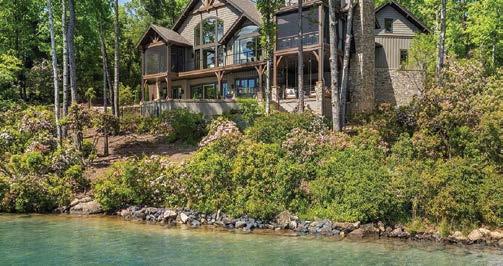
and SMP are available at https://shorturl.at/DV1Em.
Rick Huffman, founder of Earth Designs (earthdesignsc. com) and member of the South Carolina Native Plant Society, made further suggestions for landscaping your property in an environmentally friendly manner during the event. Bioretention (a form of stormwater management), grass swales, and riparian buffers can help homeowners and businesses maintain healthy yards. He also mentioned that a 1,000 square foot roof generates 800 gallons of water which can be collected in rain barrels and gardens. In general, residents should consider the soil food web and how the ecosystem is supported by native plants.
The SCWF provided details about programs to educate homeowners about the benefits of promoting wildlife habitats at home. According to the National Wildlife Federation, “An ideal Certified Wildlife Habitat® provides food, water, cover, and places to raise young for wildlife with a minimum goal of 70% native plants that provide multi-season bloom and are free of neonicotinoids and other pesticides or herbicides.”
• The Habitat Essentials Checklist provides suggestions for developing a habitat: https://shorturl.at/iVOd4
• In addition, the Wildlife and Industry Together program helps businesses support wildlife at work and ultimately allows them to cut costs by leaving areas in their natural state. More information is available on their document: https://shorturl.at/jjOdB
The LKSWPT encourages landowners, businesses, and visitors of Lake Keowee and Lake Jocassee to enjoy the experience of our unique watershed and to take efforts to protect this pristine, beautiful and important resource. Follow the activities of the LKSWPT on their website (lakekeoweewatershed.org) and on Facebook and Instagram.
Native plants are the foundation of a wildlife habitat garden. They provide ample sources of food, cover and places to raise young. National Wildlife Federation recommends a habitat garden space strive for 70% native plants. As you prepare your garden for certification, consider how you can add more native plants to your space to provide the required habitat elements listed here.
Your habitat needs to provide a minimum of three natural food sources for wildlife.
Q Native plants Q Nuts/Cones Q Seeds
Q Foliage/Twigs Q Fallen Leaf Layer Q Berries/Fruits
Q Nectar and Pollen Q Insects Q Host Plants for Caterpillars
Your habitat needs one of the following to provide clean water for wildlife to drink and bathe. If an existing water source is visible from and adjacent to your property, that can count for this requirement.
Q Bird Bath Q Seasonal Pond Q Lake
Q River or Stream Q Year-Round Pond Q Spring
Q Ocean Q Butterfly Puddling Area
Q Rain or Water Garden

Your habitat needs at least two places for wildlife to find shelter from the weather and predators.
Q Mature Trees Q Evergreens
Q Pond or Water Garden Q Bramble Patch
Q Brush or Log Pile Q Animal Burrow
Q Groundcover Q Dense Shrubs/Thicket
Q Rock Pile or Wall Q Meadow or Prairie
Q Leaving dead perennial stems 12-18 inches for overwintering insects
Your habitat needs at least two places for wildlife to engage in courtship behavior, mate, and then bear and raise their young.
Q Host Plants for Caterpillars Q Dead Trees (Snags)
Q Pond or Water Garden Q Mature Trees
Q Dense Shrubs/Thicket Q Animal Burrow
Q Meadow or Prairie Q Fallen Leaf Layer
Q Hollow Stems




BY MELISSA HIGGS, Communications Manager, FOLKS
If you haven’t attended a FOLKS Speaker Series event, you are missing out on quality information and time with neighbors and other lake lovers. In April, Tony Gody, a local resident who retired from the U.S. Navy and the U.S. Nuclear Regulatory Commission, gave an Energy Production presentation. The presentation covered the types of power generation in South Carolina, how prevalent they are, some regulatory aspects, and what the future might hold for our state. Tony also shared fun facts about electricity generation in South Carolina. Additionally, he detailed some technologies used in South Carolina today and presented a few of the benefits to humankind, as well as impacts of these technologies on our environment. He also explained how some technologies might be leveraged in the future and what their benefits might be. We are fortunate to have such expertise in our local community.
More recently, Charles Townson, from the Keowee Anglers Club, gave a “Fishing through the Seasons” presentation. Charles, a retired teacher, is a fishing guide. His business, Keowee Fishing Service, LLC, takes both first-time and seasoned fishermen on Lake Keowee excursions. Customers appreciate how he helps them bring in a “good haul” as quickly as possible and focus their efforts. He is able to recommend the lures that work best in each season. He is also an expert with electronics that will help you find the fish in Lake Keowee, a unique lake due to the undergrowth being eliminated during construction of the lake. The spotted bass that are prevalent in Lake Keowee tend to suspend over open water. In addition, different areas of the lake are colder than others and require changes in techniques.
Townson enjoys fishing in the winter months because fish are more lethargic. They move up to shallower water on sunny afternoons and are easier to catch. Fish begin to spawn in the spring and congregate

near structures in the water (e.g. docks, rocks, points, stumps). In the summer, fish feed early in the day, move deeper as the day warms, and suspend in the deep waters of the lake. As fall approaches, fish migrate to the creeks, following schools of bait. They begin to school, so there are opportunities to catch large numbers of bass.
Trailing a line near the boat, or trolling, works throughout the year on Lake Keowee, and mapping with electronics is worth the investment on such a unique lake. Charles can help you understand the specific lures and electronics. In addition, the Keowee Anglers have real-time fishing reports, educational programs, and tournaments where you can partner with fishermen experienced on Lake Keowee.

Come see us at our next event on June 18 from 5:00–7:00 pm at the Keowee Key Event Center. This is a change in our usual schedule, with the hope that people will attend that don’t normally get to come. The event is titled “History of the Area” by Pickens County Administrator, Ken Roper. He will recount the historical legacy of our area and share plans for Warpath Landing, near the former site of a colonial era fort. Don’t miss this chance to learn how Warpath Landing will evolve — gently and intentionally — under local care and vision.
BY DR. JOHN HAINS, Clemson University (Retired), Clemson Public Service and Agriculture (PSA), and FOLKS Board Member
In April, while I was crossing the Atlantic on a sailing ship, one of the things we did during the three week crossing was to have a daily trivia quiz. I provided one of the question lists, and one question in particular related to hurricanes. “True or False: Hurricanes never cross the equator.” As my former students attest, my true/false questions can be “grim reapers.” Even though they offer a 50% chance of getting the right answer, the word, “never,” is a big problem for such questions, so as I expected, most of the participants guessed wrong. The team that had our Captain as a member was the only one who got it right, and I suspect that our Captain actually understood how it works. The correct answer is “True.” But why?
In a previous article, I related the intensity and impact of Hurricane Helene in the Carolinas to ocean temperatures and the interactions with energy and water. Still, there remains that interesting fact that all hurricanes rotate in a counterclockwise direction in the Northern Hemisphere. In the Southern Hemisphere, they rotate in a clockwise manner, and the reason for this has to do with a behavioral tendency of fluid motion over a rotating surface, or movement of most any object over a rotating surface. The earth isn’t flat. Not only is it rotating, its shape is approximately that of a sphere. Objects, or atmospheric masses, can have their travel affected by this. This effect is called the Coriolis effect, and it was described precisely by Gaspard-Gustave de Coriolis in 1835 although it had been noted more than 150 years earlier with respect to the trajectory of cannonballs.
This effect is very small if the mass is moving over short distances, and the direction of water circulation as it drains a toilet or sink is more likely the result of other influences
such as the physical shape and design of the basin. However, over longer distances, the Coriolis effect is significant enough that it must be accounted for during, for example, long plane flights, ships at sea, or projectiles of various kinds.
A good friend, who was sadly misinformed, once explained to me that the direction in which a vine wound its way around another plant north of the equator is in the opposite direction south of the equator. When I asked what the vine did at the equator, he became “agitated.” I then stifled myself from asking about toilets at the equator, probably a good decision on my part.

So how does this work? Imagine that you are standing at some location exactly along earth’s equator. This means that every 24 hours you rotate with the earth for a distance equivalent to the earth’s entire circumference (about 25,000 miles at the equator). Just standing on the equator you are traveling at a linear velocity of about 1,037 mph as the earth rotates. Now imagine that you’re at the North or South Pole, right smack dab on the pole itself. You will make a complete rotation where you stand every 24 hours moving at “glacial” slowness. At different latitudes, the intermediate velocities are different. This is due to the radius from the earth’s axis being different at various latitudes. For example, in Columbia, SC, you’re moving at about 860 mph, in New York, NY, you’re moving a little more than 760 mph, and in Fairbanks, AK, you’re moving at about 500 mph. The radius from the axis is maximum at the equator and zero at the poles, and the linear velocity at the equator is a little more than 1,000 mph and basically zero at the poles. Now comes the hard part. In physics there is a principle called the “conservation of momentum.” Momentum is influenced by both the mass of an object and its velocity (momentum = mass x velocity), and unless there is interference from an outside

influence, momentum always tends to be conserved. You can visualize this effect as you twirl an object at the end of a string. If you start it twirling and then shorten the string while it is moving, it twirls faster and faster as the string (the radius) becomes shorter. The mass is constant and the linear velocity remains the same, but because the radius is shorter, in order to conserve that velocity, the twirling rate increases. (Do not try this near windows or mirrors.)
As a mass moves north from any location in the northern hemisphere, it is moving to locations that have shorter radii and the mass (a plane or an air mass) will tend to ‘twirl’ faster thus tending to deflect toward the east. Moving in a southerly direction it tends to deflect to the west for the same reason, the radius increases (Figure 1). However, moving directly east or west has little tendency to deflect due to the unchanging radius.
The low-pressure center of a hurricane near the earth’s surface is due to the rise of massive amounts of warm moist air. Because the low pressure is surrounded by relatively greater pressure, air near the earth’s surface flows toward the low-pressure center to replace the air that is rising. If it flows in from the south, in a northerly direction, the Coriolis effect tends to deflect it toward the east. Flowing in from the north, it is deflected toward the west. This contributes to the counter-clockwise circulation pattern that may become a hurricane. Imagine such a low-pressure center developing in the Caribbean Sea (Figure 2). Now imagine it developing into Hurricane Helene (Figure 3).
While that is a good start on an explanation for the circulation pattern of hurricanes, it still doesn’t clarify what

distance is effectively the minimum for its effect. Could it explain how a pitcher can throw a curve ball? Probably not. Is this actually important? Evidently it does apply to artillery shells, planes, ships, and missiles. For example, a plane flying from Moscow to New Delhi, without accounting for the Coriolis effect, might find itself landing in Pakistan. People in both places might still argue though about those toilets.


BY LIL LEDFORD, Oconee County Clemson Extension 4-H Agent
The other morning, as the first fingers of light crept tentatively into my awareness and the air filled with the cacophony of birdsong, I opened my Merlin Bird ID app, hit “Sound ID,” set my phone down, and stepped away to watch the sunrise. In just ten minutes, the app recorded 15 different bird species! (The atmospheric weight of the edges of the day allows that song to travel further than midday.) I sipped my coffee and logged the checklist into eBird. All I had done was enjoy another peaceful morning in Oconee County — yet I’d contributed to community science.
The shoreline of Lake Keowee is a remarkable place where life thrives at the intersection of land and water. Here, where forest meets lake, a quiet symphony unfolds — from reeds and tree canopy to shallow water edges. The shoreline garden of herbs, forbs, and woody plants provides shelter for countless creatures. From the misty curtain of dawn to the waves lapping in the evening light, the lake’s edge reflects nature’s resilience. In these fertile riparian buffers, landholders have the chance to practice stewardship— preserving beauty and biodiversity for generations to come.
This dynamic ecosystem requires the engagement of those who
live within it. While wildlife will always do what comes naturally, community science offers a powerful way for people — residents and visitors alike — to connect with and protect this environment. Whether you’re a seasoned naturalist, a casual observer, or a curious beginner, the following projects and resources are but a few of the ways out there to participate in meaningful observation and conservation:
iNaturalist (inaturalist.org) – Submit observations, identify species, and contribute to a global biodiversity database using the iNaturalist or related Seek apps. Participate in projects like the City Nature Challenge (citynaturechallenge.org) to contribute to realtime data on plant and animal life.
Budburst (budburst.org) – Track plant life cycle events like flowering and leafing to help scientists understand how plant species are responding to climate change locally, regionally, and nationally.
The Great Sunflower Project (greatsunflower.org) – Gather data on bee populations in urban, suburban, and rural areas to monitor pollinator health and contribute to conservation efforts.
Lost Ladybug Project (lostladybug.org) – Contribute to a
nationwide survey of threatened and rare ladybug species. Bat Detective (batdetective.org) – Identify bat calls and help sort through nocturnal sound recordings to contribute to the identification and distribution of bat species.
CitSci.org (citsci.org) – A platform that connects you with a variety of community science projects. Join existing initiatives or create your own!
• The Great Backyard Bird Count (birdcount.org) & Project Feederwatch (feederwatch.org) – Track bird populations, migration patterns, and species diversity in your neighborhood.
• eBird (ebird.org/home) – Share bird observations to provide realtime data on bird distribution and abundance, helping scientists track bird populations.
• Merlin Bird ID (merlin.allaboutbirds.org) – Use this app to identify birds by sight or sound, contributing to the database for eBird and advancing the knowledge of local bird species.
• South Carolina Adopt-A-Stream (des.sc.gov/programs/bureau-water/ watersheds-program/sc-adoptstream) – Volunteer to help monitor and protect water quality by adopting a stream in South Carolina. (Oconee 4-H will soon host the materials necessary for water quality monitoring.)
• South Carolina Native Plant Society (scnps.org) – Work to protect and preserve native plants and their habitats through workshops, events, and volunteer opportunities.
• South Carolina Master Naturalist Program (clemson. edu/extension/ mn/) – Become certified to conserve and manage South
Carolina’s natural resources while contributing to local environmental education.
• South Carolina Audubon Society (sc.audubon.org) –Focuses on bird conservation and offers opportunities for landholders to participate in birdwatching events and habitat restoration projects.
In addition, Clemson University Extension (clemson.edu/ extension) and Home & Garden Information Center (HGIC) (hgic.clemson.edu) workshops, educational materials, and one-onone consultations, provide invaluable resources for homeowners. Through their county extension office, landholders can access research-based advice on everything from soil health and water management to native plant restoration, tree health, and sustainable landscaping practices. HGIC complements this by providing information on home gardening, pest control, and environmentally friendly lawn care, all aimed at promoting a healthy, balanced ecosystem.


Committed to growing strong citizens and stewards, Clemson Extension’s 4-H in Oconee and Pickens Counties offer handson opportunities for youth, empowering the next generation of environmental stewards while strengthening their connection to Lake Keowee and its surrounding communities. For parents and grandparents, 4-H provides meaningful ways to get involved — whether by volunteering directly with youth, helping behind-the-scenes with logistics, sponsoring activities financially, or donating in-kind resources.

The shores of Lake Keowee are not just places of natural beauty — they are a dynamic ecosystem, constantly changing and requiring the involvement of those who call it home. Through community science, landholders can become active participants in the preservation and study of the lake’s unique environment. Whether tracking bird populations, monitoring plant growth, or contributing to larger conservation efforts, each observation you make becomes part of the bigger picture, helping to protect and sustain the wonder of Lake Keowee for generations to come.
BY GINA SPEAR, Superintendent, South Cove County Park
Each fall, thanks in part to a FOLKS donation and Master Naturalist Grant, we’re able to host a Jr. Naturalist class at South Cove County Park in partnership with 4-H Extension. This handson educational program introduces youth to the natural world from the ground up. Students explore everything from rocks and insects to plants, mammals, reptiles, and birds, gaining a deeper understanding of how each component plays a role in a healthy ecosystem. Through guided exploration and interactive lessons, these young naturalists learn to observe, ask questions, and foster a lifelong curiosity about the environment around them.
For the past two years, support from FOLKS has also helped power an exciting and impactful initiative: the Wildlife Habitat Education Program (WHEP), a national 4-H youth program designed to teach students about wildlife and habitat management. Since February, local students have been hard at work studying 50 animal species that call the southeastern United States home. Oconee County Parks hosts the program in partnership with local 4-H Extension Agent, Lil Ledford, and FOLKS donations help make participation possible by covering 4-H membership fees and donating books that serve as essential study materials.
The curriculum is as challenging as it is enriching. Students learn how to identify species by their calls, pelts, skulls, tracks, and wings. They study habitat types, food sources, cover needs, and the specific management practices that benefit each species. From there, they create detailed habitat management plans and practice oral presentations to defend their strategies, developing public speaking and critical thinking skills in the process. Most importantly, they begin to understand how interconnected our



natural world is and how changes to one part of the landscape can ripple through an entire ecosystem.
This year, their months of dedication culminated on April 12, when three teams from Oconee County traveled to the Baruch Institute in Georgetown, South Carolina, to compete in the state WHEP competition, and they made us all proud.
Both junior-level teams (ages 9–13) took home major honors — one earning first place overall, and the other taking third. On top of that, five participants earned individual recognition for scoring among the highest in wildlife identification. A seniorlevel participant (ages 14–19) placed first overall, while in the junior division, one participant placed second, and others earned a three-way tie for third. All in all, Oconee County’s WHEP teams brought home five state-level awards — an incredible accomplishment that reflects not only the students’ hard work but also the strength of community support behind them.
These programs aren’t just about competitions or classroom learning — they’re about giving young people the tools to connect with nature in meaningful ways. They’re about developing problemsolving skills, fostering environmental responsibility, and planting seeds of stewardship that will grow for years to come.
We couldn’t do it without FOLKS. Your generosity helps provide the resources, access, and opportunities these students need to succeed. Every contribution counts, and every bit of support makes an impact.
So again, thank you. Thank you for investing in our youth, our parks, and our shared future. Together, we’re not just teaching kids about nature — we’re helping them become the leaders who will protect it. Thank you for helping us inspire the next generation of naturalists and conservationists.




All the plants to the left are native perennials. Native plants have evolved over time to attract and support local pollinators. Unlike annuals, which are planted in seed form and then complete their life cycle within a year, perennials live several years. Can you find the names of these perennials in the word search?

(Match the name and symbol with the pictures to the left.)
BY DALE WILDE, President, FOLKS
Admission fees for State Parks are listed on each park’s website; an annual season pass, or Park Passport, is also available for purchase. While Park Passports are good for entry to the parks, they do not guarantee entry if the park is full. For more information on South Carolina State Parks and to purchase season passes, visit southcarolinaparks.com/park-passports.
Lake Keowee remains one of South Carolina’s premier boating destinations with its breathtaking scenery and convenient access points. Whether you’re a seasoned boater or a first-time visitor, these ramps make it easy to experience all the goodness Lake Keowee and its surrounding watershed offer.
DEVILS FORK STATE PARK
161 Holcombe Circle, Salem SouthCarolinaParks.com/Devils-Fork

KEOWEE-TOXAWAY STATE PARK
108 Residence Drive, Sunset SouthCarolinaParks.com/Keowee-Toxaway
Camp Cedar Creek at Keowee-Toxaway State Park
SouthCarolinaParks.com/Keowee-Toxaway/Camp-Cedar-Creek
OCONEE STATE PARK
624 State Park Road, Mountain Rest SouthCarolinaParks.com/Oconee
OCONEE STATION STATE HISTORIC SITE
500 Oconee Station Road, Walhalla SouthCarolinaParks.com/Oconee-Station
TABLE ROCK STATE PARK
158 Ellison Lane, Pickens SouthCarolinaParks.com/Table-Rock
There are two county-leased and -operated parks in Oconee County — South Cove County Park and High Falls County Park. There is one county-leased and -operated park in Pickens County with lake access. All three county parks offer day use of their beaches and boat ramps, as well as overnight camping, for a small fee.
HIGH FALLS COUNTY PARK
671 High Falls Road, Seneca ExperienceOconee.com/Parks/High-Falls-Park
MILE CREEK COUNTY PARK
757 Keowee Baptist Church Road, Six Mile VisitMileCreekPark.com
SOUTH COVE COUNTY PARK
1031 South Cove Road, Seneca ExperienceOconee.com/Parks/South-Cove-Park
There are seven public access areas on Lake Keowee.
CANE CREEK ACCESS AREA
Cane Creek Landing Road, Seneca
CROW CREEK ACCESS AREA
Crowe Creek Access Road, Sunset
FALL CREEK ACCESS AREA
Upper Boat Ramp: Shallow Ford Road, Salem Lower Boat Ramp: Fall Creek Church Road, Salem
KEOWEE TOWN ACCESS AREA
Keowee Town Landing Road, Salem
STAMP CREEK ACCESS AREA
Stamp Creek Landing Road, Seneca
WARPATH ACCESS AREA
276 War Path Road, Six Mile
WORLD OF ENERGY PICNIC AREA
7812 Rochester Highway, Seneca
Lake Keowee impounds the Little River and Keowee River and has two dams and four saddle dikes. It has a surface area of 17,660 acres and roughly 388 miles of shoreline.

Public Access Areas: Lake Marinas:


Cane Creek Landing Marina
Crowe Creek Landing


Fall Creek Landing I SC State Parks: Fall Creek Landing II Keowee-Toxaway


Keowee Town Landing State Park
Stamp Creek Devil’s Fork


Warpath Landing State Park
World of Energy
County Parks:
Mile Creek County Park
South Cove County Park
High Falls County Park
Important Sites and Numbers:
SCDNR Hotline ....................................................... 800-922-5431
Non-Emergency Pickens County Sheriff 864-898-5500
Non-Emergency Oconee County Sheriff 864-638-4111
SCDES ....................................................................... 855-472-3432
Litter Pickens County 864-898-5265
Litter Oconee County 864-638-4111
Duke Energy Lake Services ................................ 704-382-8086 800-443-5193
Where to find SC Boater Education Classes:
American’s Boating Club usps.org/index.php/sss-home
– Golden Corner Lakes
TowBoatUS boatus.com/towboatus/lake-keowee
SCDNR register-ed.com/programs/southcarolina



BY CLAIRE MATTOX, Former Jack Lewis Watershed Stewardship Scholarship Recipient, Environmental and Natural Resources and Geology Student, Clemson University
When I began water quality testing through South Carolina Adopt-A-Stream in Amanda Gladys’s Green Steps course at Walhalla High School, I had no idea those early experiences would one day shape the foundation of my academic and research career. I started by sampling a stream behind Sertoma Field— recording pH, dissolved oxygen, and E. coli levels each month. These visits nurtured my sense of environmental responsibility as a citizen-scientist and sparked a growing curiosity: What can our water tell us, if we know how to listen?
That question, and that curiosity, eventually led me to apply for the Jack Lewis Watershed Stewardship Scholarship, awarded by the Friends of Lake Keowee Society (FOLKS). In addition to the financial support, the scholarship was an affirmation of my passion for freshwater ecology and a launchpad for scientific exploration. With the encouragement and recognition of FOLKS, I will officially begin undergraduate research under Dr. William (Cory) Heaton in Fall 2025, focusing on Brasenia schreberi — commonly known as watershield — and its potential role as a bioindicator of lake health in Oconee County.
In the meantime, I am actively observing and taking detailed field notes at two lakes central to this study — Booker Lake and Beaver Lake — and preparing for a full season of fieldwork ahead.
Watershield is a native plant commonly found in the Southeastern United States. While generally benign, its sudden proliferation in Booker Lake and Beaver Lake has raised questions among community members and conservation professionals. Is this growth symptomatic of a broader ecological imbalance such as eutrophication or sediment loading or is it simply a natural fluctuation in the plant’s life cycle?
My research seeks to evaluate whether watershield can function as a bioindicator — an early warning system for ecological imbalance. Its presence, density, and distribution may offer insights into broader lake health before more visible disturbances, such as algal blooms or fish kills, occur.

Six core research questions guide this study:
1. What are the distinguishing morphological characteristics, environmental growth conditions, and ecological roles of Brasenia schreberi in small freshwater lake systems?
2. What environmental and anthropogenic factors contribute to the proliferation of Brasenia schreberi in Booker Lake and Beaver Lake?
3. What are the ecological and socioeconomic impacts of Brasenia schreberi in freshwater lake ecosystems?
4. What sustainable management strategies can control Brasenia scherberi while preserving ecological integrity?
(continued on page 28)
(continued from page 27)
5. How can ongoing monitoring and adaptive management be used to track and control Brasenia schreberi populations over time?
6. How can policy frameworks and community engagement support effective management of Brasenia schreberi in small lake systems?
These questions form the framework for my applied research, which blends field sampling, lab analysis, and community engagement.
This study is being conducted at Booker Lake in Walhalla and Beaver Lake in West Union, two privately managed lakes selected for their active watershield growth and accessibility.
Water Quality Testing: I will conduct biweekly in situ measurements of pH, dissolved oxygen, turbidity, nitrate, phosphate, temperature, and sediment depth. Inflow and outflow streams are also sampled to evaluate nutrient inputs and outputs.
Vegetation Surveys: Using quadrat and transect methods, I will document watershield density, leaf structure, mucilage thickness, reproductive organ development, and biomass through both wet and dry weight measurements.

Biodiversity Monitoring: Macroinvertebrates will be collected with dip nets and identified to assess aquatic diversity. Visual fish surveys and inventories of submerged aquatic vegetation help determine ecological impacts in areas of high watershield density versus open zones.
Community Engagement: Semi-structured interviews will be conducted with homeowners, lake users, and stakeholders to document perceptions of watershield’s aesthetic, recreational, and ecological impacts.
Management Trials: I will implement small-scale manual removal plots (2 m²) and monitoring regrowth rates, sediment disturbance, and biodiversity rebound. I will also evaluate alternative management methods, including shade mats and water movement devices.
Data Analysis: Statistical software (R and Excel) will be used to correlate environmental parameters with watershield density. GIS mapping helps visualize spatial trends and plant proliferation in relation to land use and shoreline features.
The findings from this research may offer lake managers, conservationists, and policymakers a new tool for early detection of water quality degradation. Unlike chemical tests that offer snapshots in time, biological indicators such as watershield may offer cumulative, continuous insights into long-term lake dynamics. If Brasenia schreberi proves to be a reliable bioindicator, its presence could alert communities to ecological stressors such as nutrient enrichment or hydrological disruption long before algal blooms or fish kills appear.
Moreover, this work represents an opportunity to bridge scientific research with local environmental stewardship. Through presentations, signage, and outreach, I aim to translate scientific findings into accessible resources for local communities, homeowners, and policymakers. My goal is to ensure that science informs stewardship and that stewardship is rooted in both datadriven evidence and community-shared responsibility.
(continued on page 30)

(continued from page 28)
Growing up near the very lakes I now study has given this research personal depth. These are not just field sites – they are part of my life story. The transition from sampling a stream behind a softball field to writing field reports, collecting statistical data, and testing hypotheses reflects not only academic growth but also a commitment to place-based stewardship.
I am deeply grateful to the Friends of Lake Keowee Society for investing in students like me. The Jack Lewis Watershed Stewardship Scholarship did more than support a project it launched a path. It gave me the opportunity, encouragement, and resources to begin this academic journey in earnest and to pursue meaningful research that blends ecological science with local service; more importantly, I can pursue a field I love and grow into a scientist, advocate, and environmental steward.
Without the support of FOLKS, I may never have discovered my passion for aquatic ecosystem research or envisioned a future that bridges scientific inquiry with conservation impact. Thank you for believing in the potential of young environmental leaders and for providing a foundation that continues to shape my academic and professional aspirations.
As I prepare to officially launch this research project in Fall 2025, I do so with excitement, purpose, and deep gratitude. I hope this work contributes not only to the scientific understanding of aquatic ecosystems but also to the lasting care of the lakes and landscapes we call home.
With gratitude, Claire Mattox
Jack Lewis Watershed Stewardship Scholarship Recipient, 2022


A native plant with a lot to say
Scientific Name: Brasenia schreberi
Common Name: Watershield
Type: Perennial Aquatic Herb
Native Range: Eastern U.S. (also, globally)
Watershield is a floating-leaved plant with oval, waxy leaves and gelatinous-coated undersides. Its rhizomes anchor into lake sediments, sending up leaves and flowers seasonally. It reproduces both sexually (via insect-pollinated flowers) and asexually (via underground spreading).
Ecological Functions
• Provides shade and habitat for fish and aquatic insects
• Stabilizes sediment and slows erosion
• Responds to excess nutrients, often growing rapidly in nutrient-rich or stagnant waters
Potential Issues
• May overgrow and reduce oxygen and light
• Can displace other submerged vegetation
• Impedes recreation when unmanaged
Bioindicator Role
It’s spread may signal eutrophication or declining lake health, making it a symptom and a tool in lake monitoring.




BY CARLA POIRIER, Executive Director, KOBA
Keep Oconee Beautiful Association (KOBA), a nonprofit, 501(c)(3) organization started in 1985, was organized to promote environmental stewardship in Oconee County, SC. KOBA works to restore and maintain the natural beauty of the County through litter reduction and education. The organization, the local affiliate of Keep America Beautiful and South Carolina’s PalmettoPride, educates citizens about the negative impacts litter has on the County and provides antilittering resources to promote keeping the County “clean and green.”
Through education and action, KOBA aids Oconee County citizens about reducing, reusing and recycling. KOBA works with other citizen groups and governmental agencies to raise awareness of the detrimental effects of litter on our environment and the local economy. They are especially proud of the programs in the County schools and the partnerships they have with like-minded grass root organizations.
KOBA works with the Sheriff’s Department and the Solid Waste Department, as well as other groups, such as churches and neighborhoods, to pick up litter. KOBA has litter pickups every



second Saturday of each month. Information about Adopt-aHighway, Adopt-a-Road, and other scheduled pick-ups is available on KOBA’s website: kobasc.com.
In April and May, ninety-two elementary students learned about the devastating effects littering has on our land and water resources, as well as about recycling, reusing and repurposing items. KOBA’s “Quest for Less” lessons incorporate interactive and hands-on activities. The program includes video information, reading time, and a painting activity where the students paint what they learn in the lesson. Volunteers from KOBA go into the classrooms and present the lessons to the students. If you are interested in volunteering, sign-up on KOBA’s website.

This school year, KOBA obtained a generous grant from FOLKS to provide funding to school projects. Walhalla Middle School’s Spanish teacher, Sandra Holleran, provided hands-on lessons that taught students how to build aluminum garden beds in order to plant flowers and vegetables on the school grounds to bring
pollinators to the garden. They provided food, which attracted the insects, so they could pollinate the vegetables and flowers for people to eat and enjoy. They also raised chickens from eggs with the help of Clemson Cooperative Extension, who gave the students eggs and an incubator. The students were able to learn about embryology and a chicken’s life cycle.
When asked the importance of these exercises, Mrs. Holleran stated, “These lessons not only enhance scientific knowledge, but also encourage students to engage in environmental stewardship, recognizing the vital connections between developmental biology and the health of our planet.” Further, Mrs. Holleran stated that “FOLKS’s generous support has been instrumental in implementing the embryology and pollinator lessons, providing resources and materials that enrich student learning experiences. This funding has enabled us to create hands-on activities and deepen students’ understanding of bird habitats and the essential role of pollinators, ultimately fostering a love for science and nature.”
KOBA would like to thank FOLKS for their generous grant and allowing KOBA to continue with its mission in the schools.











We appreciate the support of our Corporate and Business Members and know that they will appreciate your patronage. When you do so, please thank them for supporting FOLKS.
Blue Ridge Electric Cooperative, Inc.
City of Seneca
Duke Energy
Greenville Water
Greg Coutu — Allen Tate Realty
Keller Williams Seneca Keowee North — Patti & Gary Cason, Melissa Cason Custer, Corey Custer
Keowee Key Property Owners Assn.
Melanie Fink and Associates — Allen Tate Realty
Oconee Federal Savings & Loan
Stoneledge Home Owners Association
The Reserve at Lake Keowee
Action Services of Oconee, Inc
Advocates for Quality Development
Allen Tate — John Pulliam
Backwater Landing
Blue Ridge Bank
Carolina Bay Healing
Spring Waters
Carolina Wealth Management
Classic Lighting
Custom Dock Systems, Inc.
Dolly’s Roofing
Dorn’s Landscape Service
For the Birds, Inc.
Golden Corners Lakes
Sail & Power Squadron
Goldie & Associates
Justin Winter & Associates
Forbes Global Properties
Keowee North Marine
Kingfisher Maps
Kroeger Marine Construction
Lake Keowee Marina
Metal Lake Maps — Ken Van Natta
Northwestern Supply
Porch Conversion of Seneca
Rainmaker Ponds and Irrigation
Sexton Griffith Custom Builders, LLC
Shorescapes, Inc
Strickland Marine and RV
The Boat Dock Company
The Cliffs at Keowee HOA
The Happy Berry
The Lake Company — Lake Keowee
The Wine Emporium
T & M Custom Docks
Upstate Insurance Agency
Vassey Financial Planning and Investments
Waterford Pointe HOA



JUNE 18 5 PM – 7 PM
Keowee Key Event Center History of the Area
JULY 16 5 PM – 7 PM
Keowee Key Event Center Hiking in the Area – Foothills Trail
AUGUST 14 2:30 PM – 4 PM World of Energy – Seneca Water Resources – Clemson Extension
SEPTEMBER 10 5 PM – 7 PM
Keowee Key Event Center Oconee County Sheriff
OCTOBER 9 2:30 PM – 4 PM
World of Energy – Seneca Shoreline Management Update
Check our website for signups and updates — KeoweeFOLKS.org





FOLKS’s 30-year history has been built upon the pillars of our mission statement that clearly focuses our efforts on advocacy, conservation, and education—ACE.
Our achievements over the past few years:
• Stakeholder for relicensing efforts in the watershed
• Uniting voice in the state for boating safety
• Sustained efforts with litter cleanup and prevention
• Ombudsman and information resource for members and communities
• Adopt-a-Stream water quality monitoring
• Bi-annual Lake Sweeps and Island Keepers programs
• Installation of fish habitat—Since 2022 FOLKS installed more than 215 Dock Pro Kits and over 400 larger fish habitats throughout the lake
• Bluebird nesting boxes and osprey platforms
• Publication of the magazine — KEOWEE
• Jack Lewis Watershed Stewardship Scholarship Program — We have selected 6 local high school students for the 2024–25 program.
• Bill Miller Adopt-a-Stream Lending Library — Provided $5,000 funding for local area schools to support stream monitoring efforts
• Outreach to local Home Owners Associations
• Presentations to at Newcomers, Rotaries, and community presentations at World of Energy
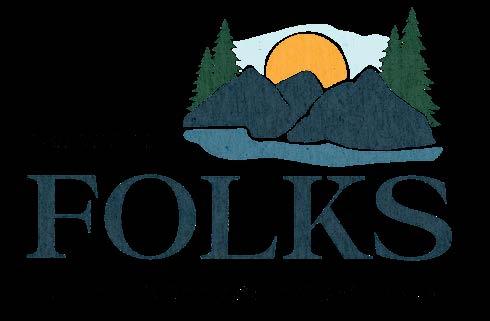
We are excited about continuing our stewardship of preserving the lake and serving as stakeholder on important lake and watershed issues. We are focusing our efforts this year on more community engagement and working with local area schools to help them develop meaningful STEM projects. Join our team of volunteers and become a member!

Our membership form is also online at KeoweeFOLKS.org or by scanning the QR code above. Dues and donation are tax-deductible.
FOLKS is a 501(c)(3) public service watershed organization.
Option for digital copy only of the newsletter


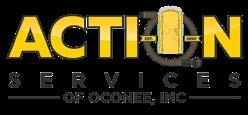




864.638.6642





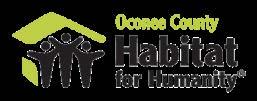



















C/O The Alliances
1201 N. Fant St., Anderson, SC 29621
